Welcome to IBonomics! We are excited to launch and hope you find the website useful! Learn more about us here!
Welcome to IBonomics! We are excited to launch and hope you find the website useful! Learn more about us here!
A diagram showing the effects of a price floor set above equilibrium, resulting in excess supply and welfare loss in the market.
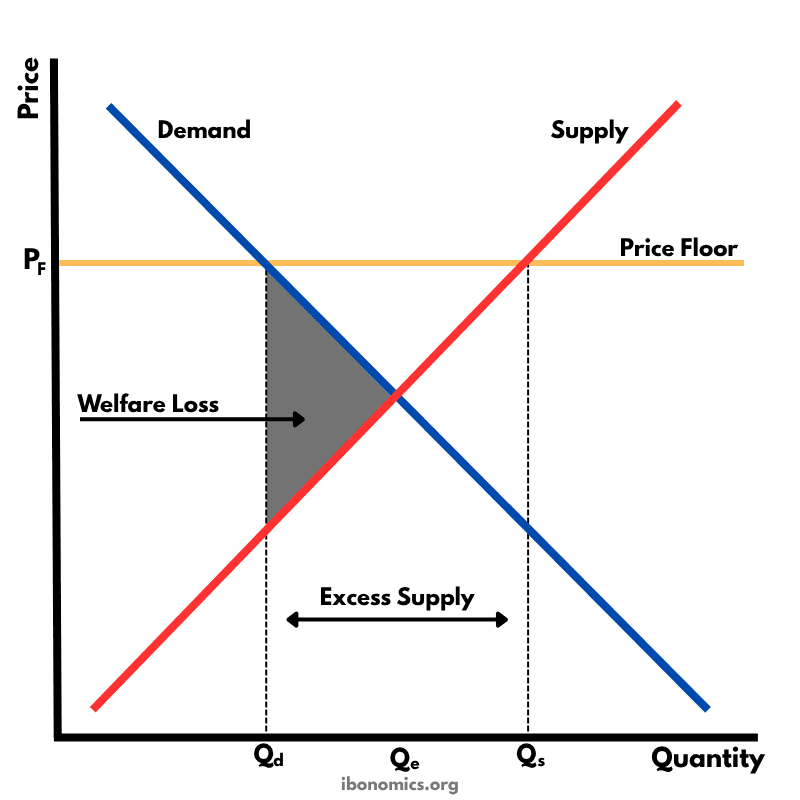
Demand Curve: Slopes downward, indicating an inverse relationship between price and quantity demanded.
Supply Curve: Slopes upward, indicating a direct relationship between price and quantity supplied.
Price Floor (Pf): A legally imposed minimum price above equilibrium, leading to market distortion.
Excess Supply: The difference between Qs and Qd — the amount of unsold goods resulting from the price floor.
Welfare Loss: The loss of total surplus due to reduced market efficiency — shown as a shaded triangle.
A price floor is a minimum legal price set by the government, typically above the market equilibrium price.
At the floor price (Pf), quantity supplied (Qs) exceeds quantity demanded (Qd), creating excess supply (surplus).
Firms are willing to supply more, but consumers demand less due to the higher price.
The shaded area represents welfare loss — the loss of allocative efficiency as mutually beneficial trades between Qd and Qe do not occur.
Price floors are commonly used in agricultural markets and labor markets (minimum wage) to protect producers or workers, but can lead to inefficient outcomes.
Explore other diagrams from the same unit to deepen your understanding
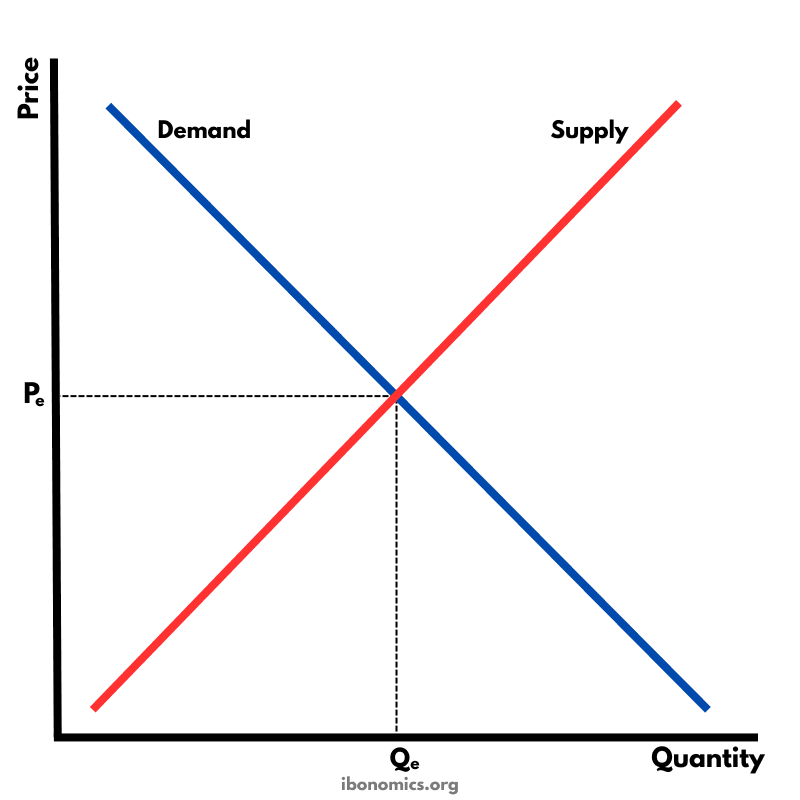
The fundamental diagram showing the relationship between demand and supply in a competitive market, determining equilibrium price and quantity.
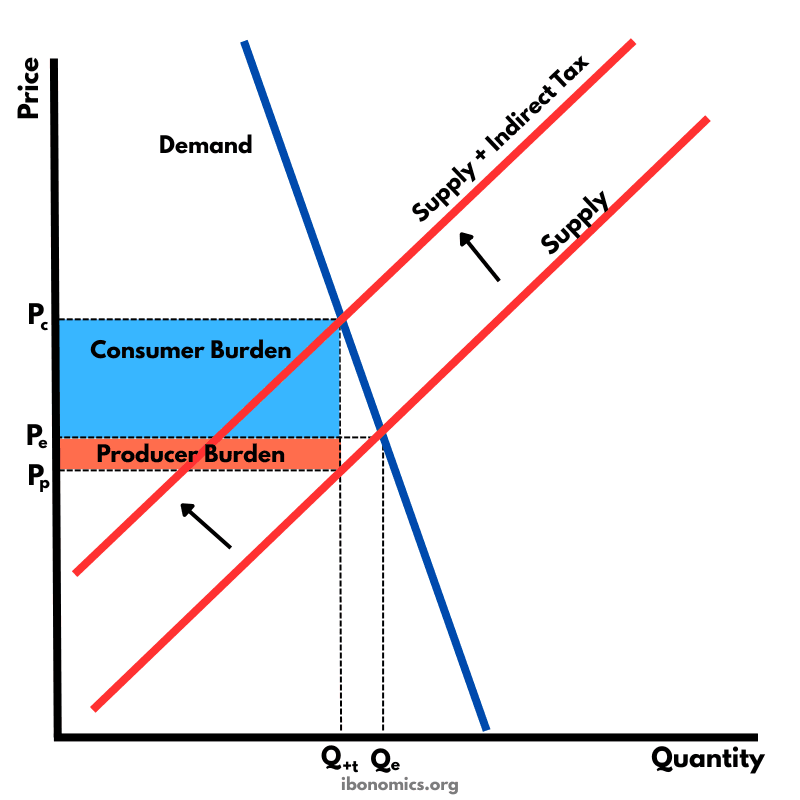
A supply and demand diagram showing the effect of an indirect tax on a good with inelastic demand. The consumer bears a larger share of the tax burden.
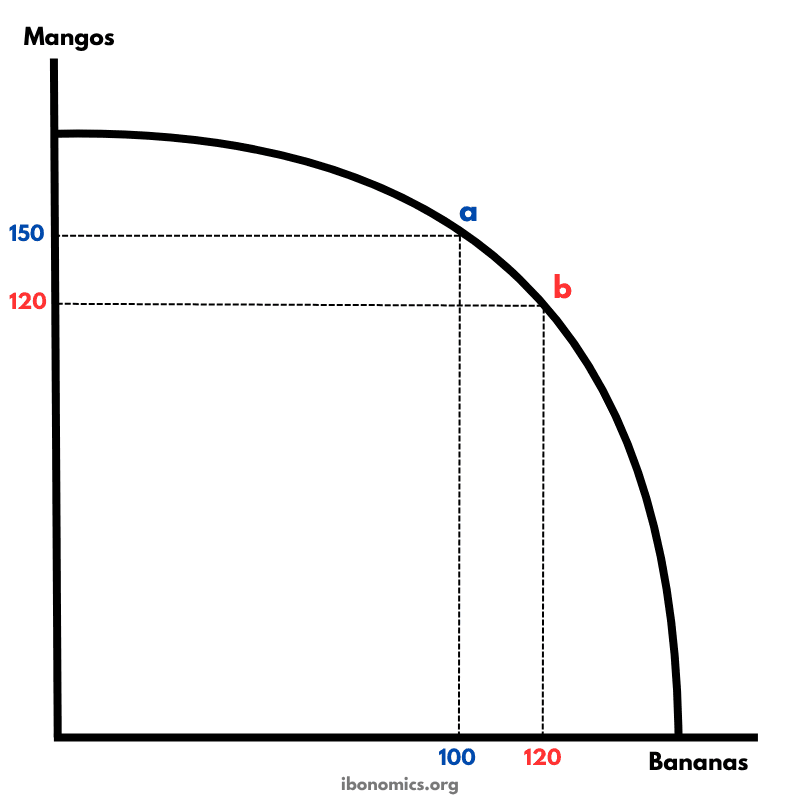
A production possibility curve illustrating the concept of opportunity cost and the trade-offs between producing two goods: mangos and bananas.
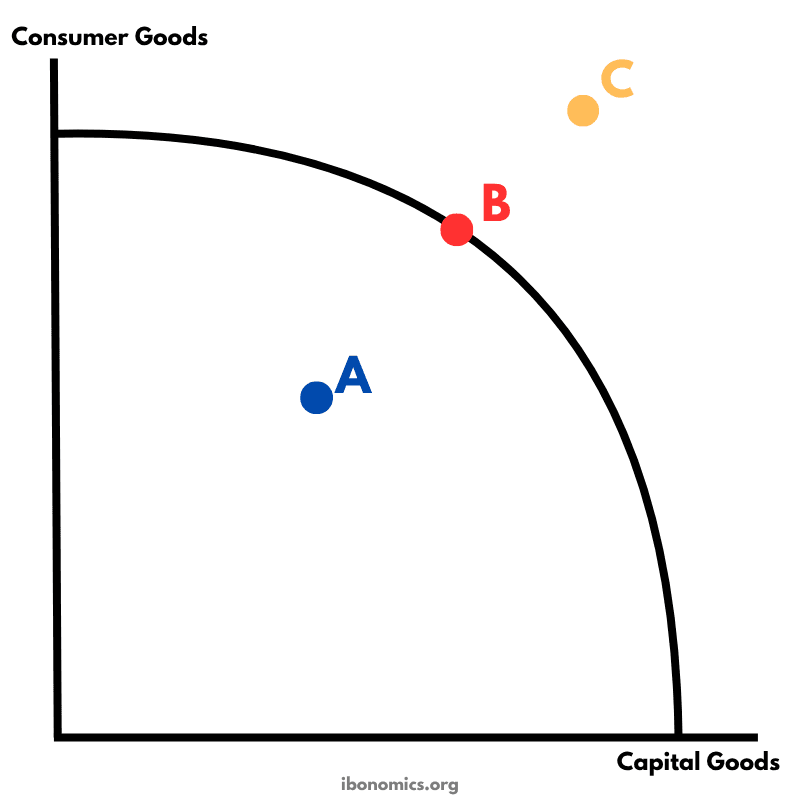
A PPC diagram showing different levels of production efficiency and economic feasibility using combinations of consumer and capital goods.

A model illustrating how money, goods, services, and resources flow between households, firms, the government, the financial sector, and the foreign sector in an economy.
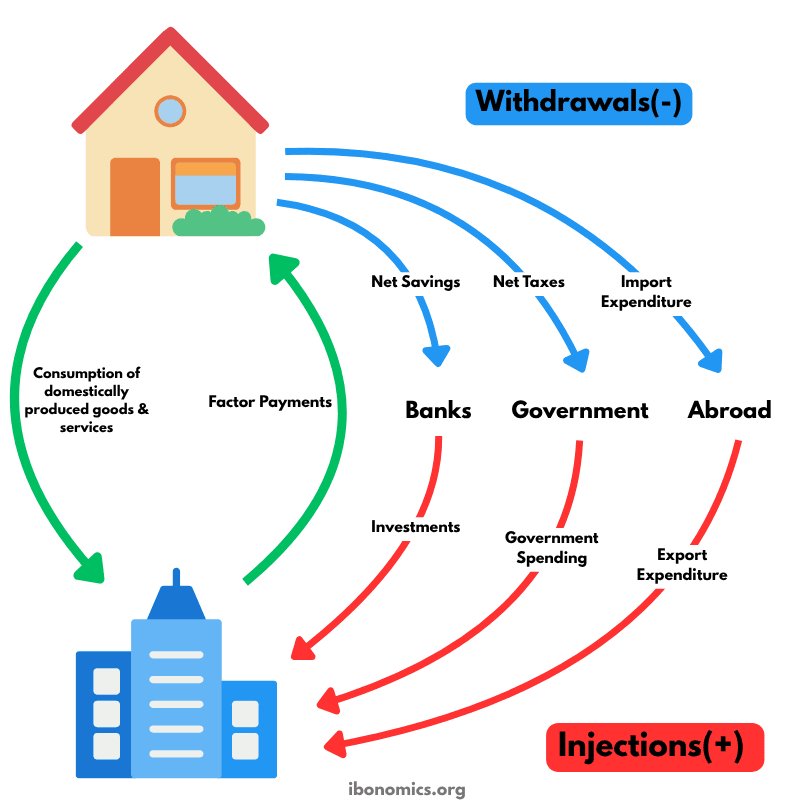
A refined circular flow model highlighting the roles of injections and withdrawals in determining national income and economic equilibrium.